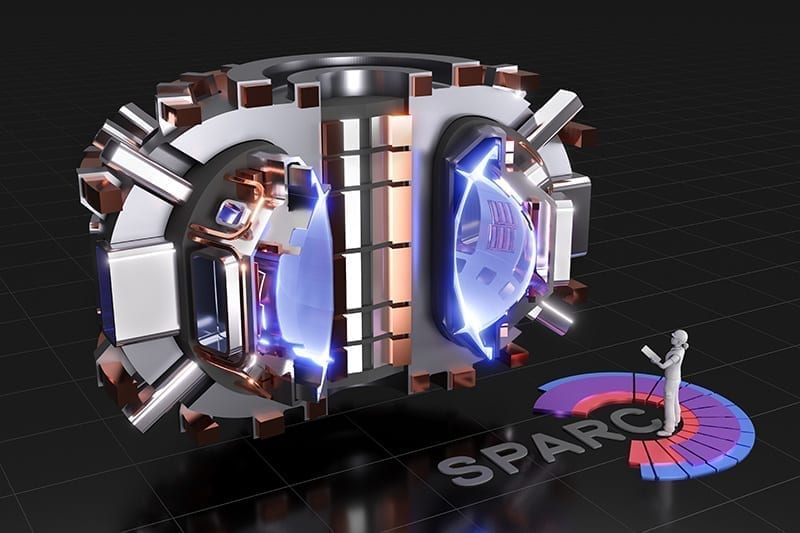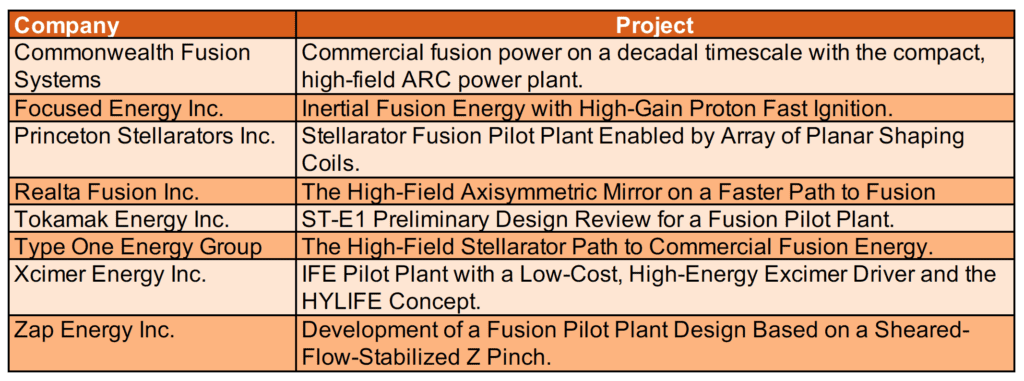Fusion Energy Projects Get Boost from DOE Funding
Credit to Author: Aaron Larson| Date: Thu, 01 Jun 2023 16:51:40 +0000

The U.S. Department of Energy (DOE) announced the first round of awardees of the Milestone-Based Fusion Development Program. The program is the latest in a series of efforts designed to align public and private sectors toward fusion commercialization.
“The Biden administration obviously sees enormous potential in fusion—harnessing the power of the sun and the stars right here on Earth—to deliver affordable, abundant, reliable, clean energy,” Energy Secretary Jennifer Granholm said during a presentation on March 31. “We’ve launched now this Milestone-Based Fusion Development Program, where private companies are going to team up with our labs, and with universities and others, to work through the scientific and technological challenges with the goal of designing a fusion pilot plant within the next five to 10 years.”
With the announcement on Wednesday, the DOE awarded $46 million to eight private fusion companies through the milestone-based program (Table 1). The companies receiving awards were Commonwealth Fusion Systems of Cambridge, Massachusetts; Focused Energy of Austin, Texas; Princeton Stellarators of Branchburg, New Jersey; Realta Fusion of Madison, Wisconsin; Tokamak Energy of Bruceton Mills, West Virginia; Type One Energy of Madison, Wisconsin; Xcimer Energy of Redwood City, California; and Zap Energy of Everett, Washington.

“Critically, these companies represent a wide range of technical and commercial pathways,” Granholm said, noting that some are working on more technically mature approaches including tokamaks and stellarators, while others are working on innovative concepts with lower technical maturity, such as mirror and Z-pinch technology, which could lead to more compact and lower-cost systems. “By funding such a diverse portfolio, our ultimate goal is for the strongest solutions to rise to the top and to help us chart a clear path forward to bring clean fusion energy to American homes and business,” said Granholm.
The milestone-based concept is different from traditional DOE programs. “This public-private partnership where the federal government provides fixed payments in private companies for reaching mutually negotiated technical, business, commercialization, and community benefits milestones, as particularly inspired by the NASA Commercial Orbit Transportation Services Program that helped enable the commercial space launch industry,” DOE Under Secretary for Science and Innovation Geraldine Richmond explained.
“Through the milestone program, these companies will work with researchers at our national labs and universities to advance their designs for fusion pilot plants and receive payments from DOE along the way for reaching key milestones. This is a different approach from what we typically do in the Office of Science, but one that has proven successful in other areas,” said Asmeret Asefaw Berhe, director of the DOE’s Office of Science.
“It’s really about innovating the way we innovate,” said Bob Mumgaard, CEO of Commonwealth Fusion Systems, one of the companies receiving an award. “When we think about what’s been done in the past in fusion, we think about grants, and we think about private companies sort of being separate. And this actually pulls all the parts of the fusion ecosystem in the United States together, and leverages what each group does best. So, it leverages the deep science in the National Academies and capabilities and test stands. It leverages the education and innovation in the universities—the communities and how they want this technology to advance. Then, also, the companies and how to get to a product as quickly as possible and execute, and finance to make sure that product is something that can be picked up and scaled in the long term. So, I think this innovative approach to pulling it all together is the piece to me that is very, very exciting,” he said.
The Fusion Industry Association (FIA) said the milestone-based approach also protects taxpayers through a cost-share element. Private companies must match 100% of the award and only receive funding when each milestone is met, the group said. The FIA reported that the program was “largely oversubscribed by applicants,” suggesting there were “enough quality applications that would allow for a program 3X in size, at least.”
Susana Reyes, vice president for Chamber and Plant Design with Xcimer Energy, another company receiving an award, suggested private investors will be emboldened by the DOE’s action. “This program also will help catalyze the private investments infusion that we have been seeing over the last few years. We believe that this program will help show that the private investors don’t have to hold all of the risk by themselves. So, we expect to see an acceleration of the timeline in this way.”
Phil Larochelle, a partner with Breakthrough Energy Ventures, agreed. “I think that this is a great day for not only more government funding going into fusion, but also opening the doors for a lot more private investment to come into fusion as well,” he said.
A lot of money has already been invested by private companies. Said Granholm, “Today, there’s nearly $5 billion of private capital invested in predominantly U.S.-based fusion companies. There’s no longer a question of possibilities, I say, it is a question of ingenuity and whether we can muster up the investment and the commitment that this challenge demands.”
“At Breakthrough Energy Ventures, we’re looking for those really important technology leaps that can have a meaningful impact on the well-being and sustainability for all of humanity. Commercial fusion power would be one of the greatest such breakthroughs—it really is the ultimate energy source,” said Larochelle. “And that’s been the driver for us to be investors in four great fusion companies so far. We applaud the efforts of the U.S. Department of Energy and the many decades of work it’s done in promoting the science, and now with this amazing milestone program that we think will go a long way towards getting commercial fusion reactors on the grid in the U.S. in a greatly accelerated manner.”
—Aaron Larson is POWER’s executive editor (@AaronL_Power, @POWERmagazine).
The post Fusion Energy Projects Get Boost from DOE Funding appeared first on POWER Magazine.